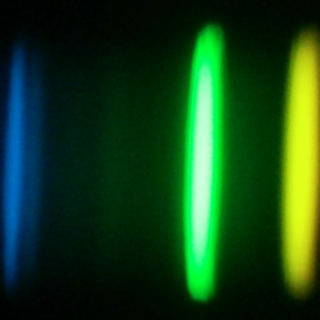Bibcode
Hourihane, A.; François, P.; Worley, C. C.; Magrini, L.; Gonneau, A.; Casey, A. R.; Gilmore, G.; Randich, S.; Sacco, G. G.; Recio-Blanco, A.; Korn, A. J.; Allende Prieto, C.; Smiljanic, R.; Blomme, R.; Bragaglia, A.; Walton, N. A.; Van Eck, S.; Bensby, T.; Lanzafame, A.; Frasca, A.; Franciosini, E.; Damiani, F.; Lind, K.; Bergemann, M.; Bonifacio, P.; Hill, V.; Lobel, A.; Montes, D.; Feuillet, D. K.; Tautvaišienė, G.; Guiglion, G.; Tabernero, H. M.; González Hernández, J. I.; Gebran, M.; Van der Swaelmen, M.; Mikolaitis, Š.; Daflon, S.; Merle, T.; Morel, T.; Lewis, J. R.; González Solares, E. A.; Murphy, D. N. A.; Jeffries, R. D.; Jackson, R. J.; Feltzing, S.; Prusti, T.; Carraro, G.; Biazzo, K.; Prisinzano, L.; Jofré, P.; Zaggia, S.; Drazdauskas, A.; Stonkuté, E.; Marfil, E.; Jiménez-Esteban, F.; Mahy, L.; Gutiérrez Albarrán, M. L.; Berlanas, S. R.; Santos, W.; Morbidelli, L.; Spina, L.; Minkevičiūtė, R.
Referencia bibliográfica
Astronomy and Astrophysics
Fecha de publicación:
8
2023
Revista
Número de citas
50
Número de citas referidas
42
Descripción
The Gaia-ESO Survey is a public spectroscopic survey that targeted ≳105 stars covering all major components of the Milky Way from the end of 2011 to 2018, delivering its final public release in May 2022. Unlike other spectroscopic surveys, Gaia-ESO is the only survey that observed stars across all spectral types with dedicated, specialised analyses: from O (Teff ~ 30 000-52 000 K) all the way to K-M (≳3500 K). The physics throughout these stellar regimes varies significantly, which has previously prohibited any detailed comparisons between stars of significantly different types. In the final data release (internal data release 6) of the Gaia-ESO Survey, we provide the final database containing a large number of products, such as radial velocities, stellar parameters and elemental abundances, rotational velocity, and also, for example, activity and accretion indicators in young stars and membership probability in star clusters for more than 114 000 stars. The spectral analysis is coordinated by a number of working groups (WGs) within the survey, each specialised in one or more of the various stellar samples. Common targets are analysed across WGs to allow for comparisons (and calibrations) amongst instrumental setups and spectral types. Here we describe the procedures employed to ensure all survey results are placed on a common scale in order to arrive at a single set of recommended results for use by all survey collaborators. We also present some general quality and consistency checks performed on the entirety of the survey results.
The full Gaia-ESO catalogue is available at the CDS via anonymous ftp to cdsarc.cds.unistra.fr (ftp://130.79.128.5) or via https://cdsarc.cds.unistra.fr/viz-bin/cat/J/A+A/676/A129
Proyectos relacionados

Pruebas Observacionales de los Procesos de Nucleosíntesis en el Universo
Recientemente se han llevado a cabo varios análisis espectroscópicos de estrellas con planetas. Uno de los resultados más relevantes ha sido descubrir que las estrellas con planetas son en promedio más metálicas que las estrellas del mismo tipo espectral sin planetas conocidos (Santos, Israelian & Mayor 2001, A&A, 373, 1019; 2004, A&A, 415, 1153)
Garik
Israelian

Abundancias Químicas en Estrellas
La espectroscopía de estrellas nos permite determinar las propiedades y composiciones químicas de las mismas. A partir de esta información para estrellas de diferente edad en la Vía Láctea es posible reconstruir la evolución química de la Galaxia, así como el origen de los elementos más pesados que el boro, forjados principalmente en los interiores
Carlos
Allende Prieto